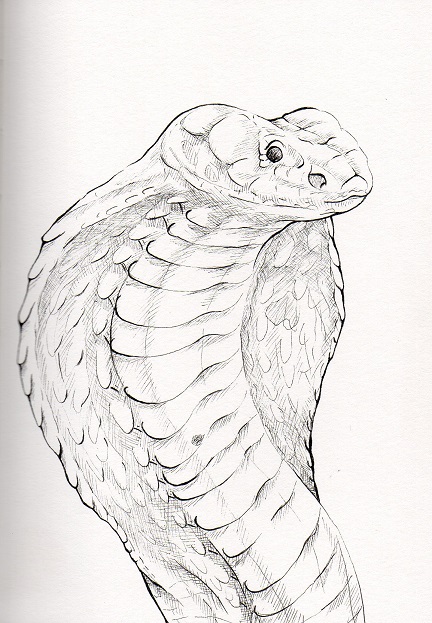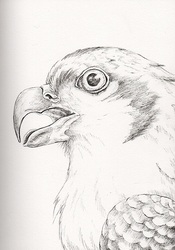Sign In
CloseTotem of the day is Cobra! There is a choice before you that you must make. Be sure to watch and be patient for the perfect time to know when to move. Don't hesitate when you do take action, but move quickly and decisively. Be aware of what is around you so that you are not deceived by illusions spun by others. You may be aided with an increase in intuitive abilities so use these when making your decisions. Take the time to enjoy free form, slow moving dance or engage in yoga practices. The Cobra spirit guide is known for it's connection to magic, wisdom, change, speed, grace, royalty, and the cycles of death and rebirth. Cobra can come as a reminder to open your eyes and senses to what you can within yourself and within your environment. This may enable you to see unnoticed abilities within you or others. Cobra also comes when we need to gather our self-confidence or to know when the time is right to strike. Gather the knowledge around you. By doing so, this will aid in never being caught off guard. These snakes are sacred in India and used in sacred rites. The Hindu belief sees Lord Shiva, or the God of destruction and regeneration, within the Cobra. These snakes are greatly connected with death and birth. In Egypt, Cobras were symbols of hidden wisdom and symbols of Egyptian royalty. It was thought that the Cobra was the personification of the Goddess Wadjet and would act as guardian to the Pharaoh. People who connect with Cobra trust their instincts in knowing what to do in situations and are often adept at figuring out when to move forward or withdraw. These individuals often carry themselves with dignity and have great skills at gazing past the masks people wear which can often be intimidating to others.
Cobras, Ophiophagus hannah, are carnivorous creatures known as Elapids which are a group of poisonous snakes with hollow fangs fixed to the top of their mouth. There is debate on the exact definition of cobra. This means there are between 28 to 270 various species that could fall into this name. Often, the name Cobra refers to several species of snakes including those who have hoods or the ability to raise the upper part of their body. However, genetically, the true cobras are only those that belong to the genus Naja. The name Cobra comes from the Portuguese Cobra de Capello meaning "hooded snake." Cobras can be found throughout Africa, India, the Middle East, Indonesia, and Southeast Asia. with a preference for hot, tropical areas. However, they can also be found in forests, grasslands, savannas, and farming areas. Cobras are among the larger of snakes, many species reaching over 6 feet long. Color and pattern of their scales changes greatly between species. However, cobras do share other features such as smooth scales, round pupils, night vision, and an excellent sense of smell. The largest true cobra is the Forest Cobra reaching 10 feet long. The King Cobra, while not actually considered a 'true' cobra, is the largest venomous snake of all reaching up to 18 feet long. The smallest species being the Mozambique spitting cobra which reaches only 4 feet long. Spitting is a technique used by these snakes in order to extend the range of their venom. These snakes are able to shoot venom from their fangs while aiming at their foe's eyes. If able to land, blindness can result if the venom is not washed out well. The largest spitting cobra is known as the Ashe's spitting cobra which grows to 9 feet long. The iconic hood of a cobra is created by the snake spreading out the ribs of it's neck into a flattened, widened area of the body which is used to ward off threats such as predators. These defensive displays also include hissing and raising up to a third of their body into the air. This is all done to make the snake look as large and imposing as possible. The venom of these snakes is a neurotoxin which attacks the nervous system. In smaller prey, this can cause death while, in humans, it can cause muscle weakness, difficulty breathing, vomiting, respiratory failure, necrosis(death of cells and tissue), and eventually death after 30 minutes. Fortunately, an antivenin is available which can save those bitten. All spitting cobras, and a few other species, also possess a cytotoxic venom which targets body tissue and will cause severe pain, swelling, and necrosis. The diet of a Cobra consists of nearly anything they can find. These opportunistic hunters will eat small mammals, birds, lizards, eggs, carrion, and even other snakes. Cobras are most active during dawn or dusk when they slither through the undergrowth searching for prey to ambush. During the hottest part of the day, they will hide from the heat under rocks or brush. Snakes have a slow metabolism which enables them to do from days to months without eating. When reproducing, a single female cobra can lay between 20 to 40 eggs in one time which will be defended by the parents until they hatch between 60 and 80 days later. King Cobras are the only species of snake which will actually build a nest for their eggs. In average, a cobra will live up to 9 years.
Submission Information
- Views:
- 683
- Comments:
- 0
- Favorites:
- 1
- Rating:
- General
- Category:
- Visual / Traditional




